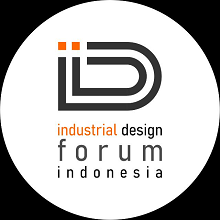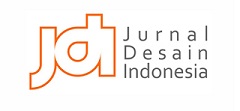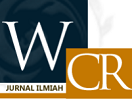ANALISIS PENGEMBANGAN DESAIN FASHION BERKELANJUTAN DI INDONESIA
Abstract
Analysis of Sustainable Fashion Design Development in Indonesia describes how a design approach strategy can be put into practice to contribute to the development of sustainable fashion. Fashion is an industry that has great potential for Indonesia's creative economy and employment, but on the other hand it has negative social and environmental impacts. Sustainable fashion is a new trend and aesthetic that is developing in urban society. There are various strategies to develop sustainable fashion, one of which is through a design approach. Using a qualitative descriptive approach, this paper further analyzes the implementation of this strategy through purposive sampling of the brand, Sejauh Mata Memandang, as one of the pioneers of sustainable fashion brand in Indonesia. Based on the results of virtual observations and data analysis, it is concluded that there are six sustainable design strategies carried out by Sejauh Mata Memandang that can be used as references as best practices for developing sustainable fashion design in Indonesia.
Keywords
Full Text:
PDF (Bahasa Indonesia)References
Brooks, A., Fletcher, K., Francis, R. A., Rigby, E. D., & Roberts, T. (2017). Fashion, sustainability, and the anthropocene. Utopian Studies. Vol. 28(3).
DOI:https://doi.org/10.5325/utopianstudies.28.3.0482
Dean, C. (2020). Waste - Is It Really in Fashion? Https://Www.Fashionrevolution.Org/Waste-Is-It-Really-in-Fashion/ .
Fletcher, K. (2012). Sustainable fashion and textiles: Design journeys. In Sustainable Fashion and Textiles: Design Journeys.
DOI:https://doi.org/10.4324/9781849772778
Győr, A. F. (2017). Digital ethnography: Principles and practice by Sarah Pink, Heather Horst, John Postill, Larissa Hjorth, Tania Lewis, Jo Tacchi (1st edition. London, Sage, 2016). In Corvinus Journal of Sociology and Social Policy. Vol. 8(1).
DOI:https://doi.org/10.14267/CJSSP.2017.01.08
Handayani, R. B., Hutama, K., & Sunarya, Y. Y. (2020). Matriks Strategi Implementasi Perancangan Fashion Berkelanjutan. Jurnal Seni Dan Reka Rancang: Jurnal Ilmiah Magister Desain, 3(1).
DOI:https://doi.org/10.25105/jsrr.v3i1.8291
Holmes, E. (2014). Fashion Brands’ Message for Fall Shoppers: Buy Less, Spend More. Https://Www.Wsj.Com/Articles/Fashion-Brands-Message-for-Fall-Shoppers-Buy-Less-Spend-More-1409786240.
Jung, S., & Jin, B. (2014). A theoretical investigation of slow fashion: Sustainable future of the apparel industry. International Journal of Consumer Studies. Vol. 38(5).
DOI:https://doi.org/10.1111/ijcs.12127
Laitala, K., Boks, C., & Klepp, I. G. (2015). Making Clothing Last : A Design Approach for Reducing the Environmental Impacts. Vol. 9(2), 93–107.
Nijman, S. (2019). UN Alliance For Sustainable Fashion addresses damage of ‘fast fashion.’ (n.d.). Diambil dari: https://www.unep.org/news-and-stories/press-release/un-alliance-sustainable-fashion-addresses-damage-fast-fashion (Diakses pada tanggal September 5, 2021)
Wild, B. (2016). Imitation in fashion: Further reflections on the work of Thorstein Veblen and Georg Simmel. Fashion, Style & Popular Culture. Vol.3(3).
DOI:https://doi.org/10.1386/fspc.3.3.281_1
Young, S. (2020). “Fashion Revolution Week: What Was the Rana Plaza Disaster and Why Did it Happen?”. Dalam INDEPENDENT Dimabil dari: Https://Www.Independent.Co.Uk/Life-Style/Fashion/Rana-Plaza-Factory-Disaster-Anniversary-What-Happened-Fashion-A9478126.Html.
DOI: http://dx.doi.org/10.22441/narada.2022.v9.i1.008
Refbacks
- There are currently no refbacks.
Fakultas Desain dan Seni Kreatif
Universitas Mercu Buana
Gedung E Lantai 4
Jl. Raya Meruya Selatan no.1, Kembangan, Jakarta 11650
Tlp./Fax: +62215871335
Journal International Standard Serial Number (ISSN) Registration:
The Journal is indexed by:
Tools for Citations & Plagiarism Detection:

Ciptaan disebarluaskan di bawah Lisensi Creative Commons Atribusi-NonKomersial 4.0 Internasional
 NARADA: Jurnal Desain dan Seni
NARADA: Jurnal Desain dan Seni

























